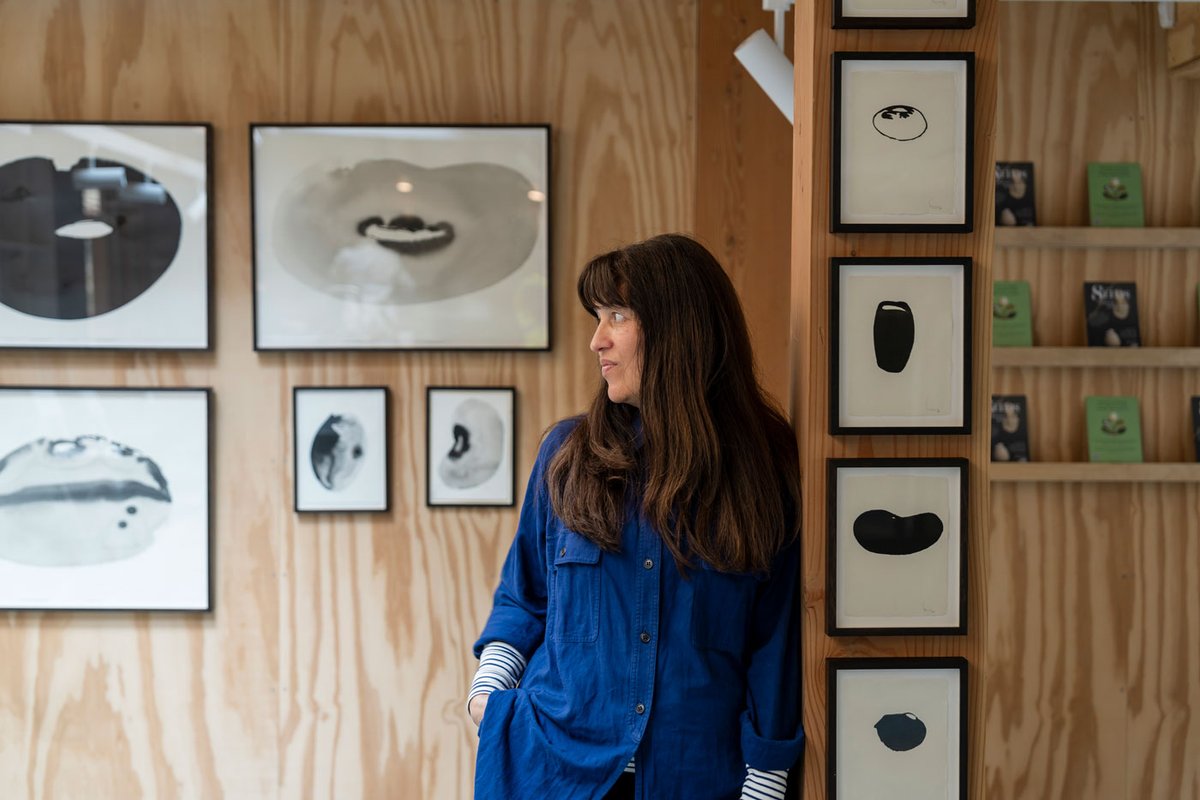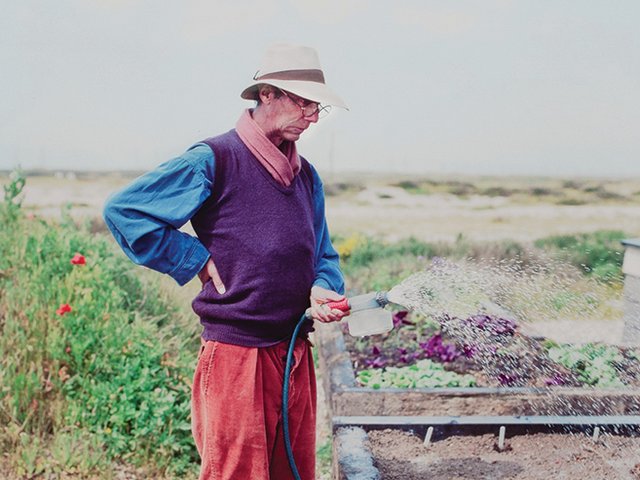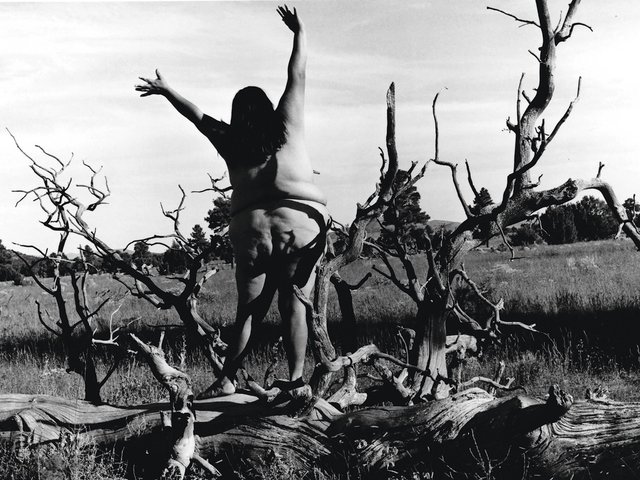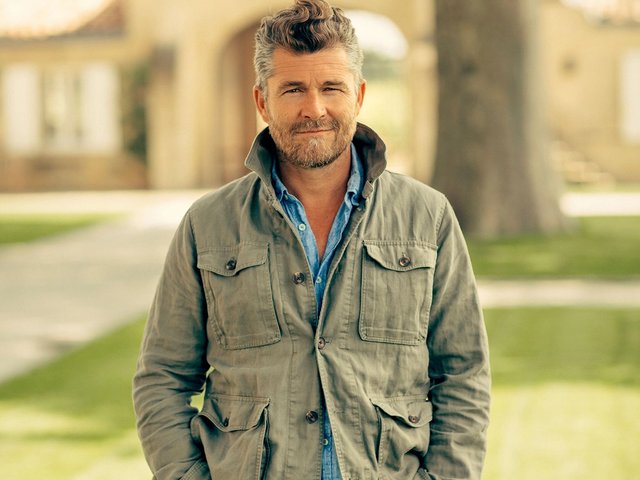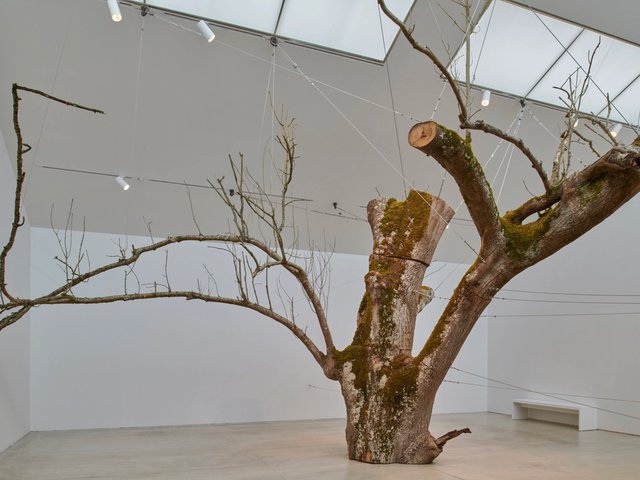Wander away from Highgate’s busy high street, down an alley of houses still under construction, and you will reach an unlikely sight: a hidden meadow of poppies, daisies and lavender. A serpentine path leads through lush wildflower plantings and a vegetable garden to meet a complex of buildings. This is the newly expanded OmVed Gardens, a north London oasis billed as the UK’s first centre for food, ecology and creativity. The privately funded urban garden opened in 2017, transforming the two-acre plot of a former garden centre, and recently celebrated a relaunch that has added a “hilltop village” of spaces open to the public year-round.
Seeds—and the potential futures they store within—are both a workaday reality of OmVed, which runs a Seed Saving Network with community members ranging from Cornwall to the north of Scotland, and a powerful metaphor for its forward-looking ecological mission. The centre is rooted in the local community, bringing in school students for hands-on lessons in vegetable growing, while tapping into global conversations around climate resilience, biodiversity and permaculture. OmVed, its name referring to the Hindu words for sound (Om) and knowledge (Ved), holds events associated with the UN World Food Programme and the Chef’s Manifesto, a global network of chefs aligned with the UN Sustainable Development Goals.
Seeds are also at the centre of an exhibition that inaugurates the expanded site this summer, with works by the London-based artist Vivienne Schadinsky displayed across all the new buildings: a multi-purpose events space known as the Barn, a kitchen, a double-height greenhouse and a Seed Library. Into the Seeds of Time (until 3 August) features ink paintings, films, sculptures and prints made during Schadinsky’s year-long residency at OmVed. In an interview with The Art Newspaper, she said she used the gardens as a kind of “living laboratory”, returning weekly to study the life cycle of beans through the changing seasons. The resulting artworks capture three varieties “from seed to soil to story” – the puy lentil, the Essex pea bean and the gaia soybean.
Ecological storytelling has long been part of Schadinsky’s multimedia practice, which draws on research collaborations with a host of scientific advisors. She describes it as “a collaborative and inquisitive process” that is “shaped by my artistic curiosity” for the natural world while distilling complex climate-related issues. Schadinsky recalls feeling an instant affinity with OmVed’s approach to ecology through the lens of creativity. “We speak the same language,” she says.
OmVed invites “a diversity of creative minds to think with us, in the garden,” says Sol Polo, the curator and programme manager. The residency programme, which has involved not only visual artists but also poets and ecologists, “reminds us of the importance of looking at things deeply, and sometimes differently, to offer inspiration, hope, a critical vision or a new perspective or path in the context of the current climate crisis”.
Schadinsky’s interest in beans began by following a tangent from an earlier body of work, Magic Hour, which looked at edible plants that are endangered due to climate change, including coffee, vanilla, avocado and cacao. Having observed the plant species under threat of extinction, she went in search of “more uplifting” environmental subjects and investigated the kinds of “future foods” that are predicted to sustain humanity on a warming planet. Enter legumes, a crop that can withstand adverse conditions and is also rich in plant-based protein.
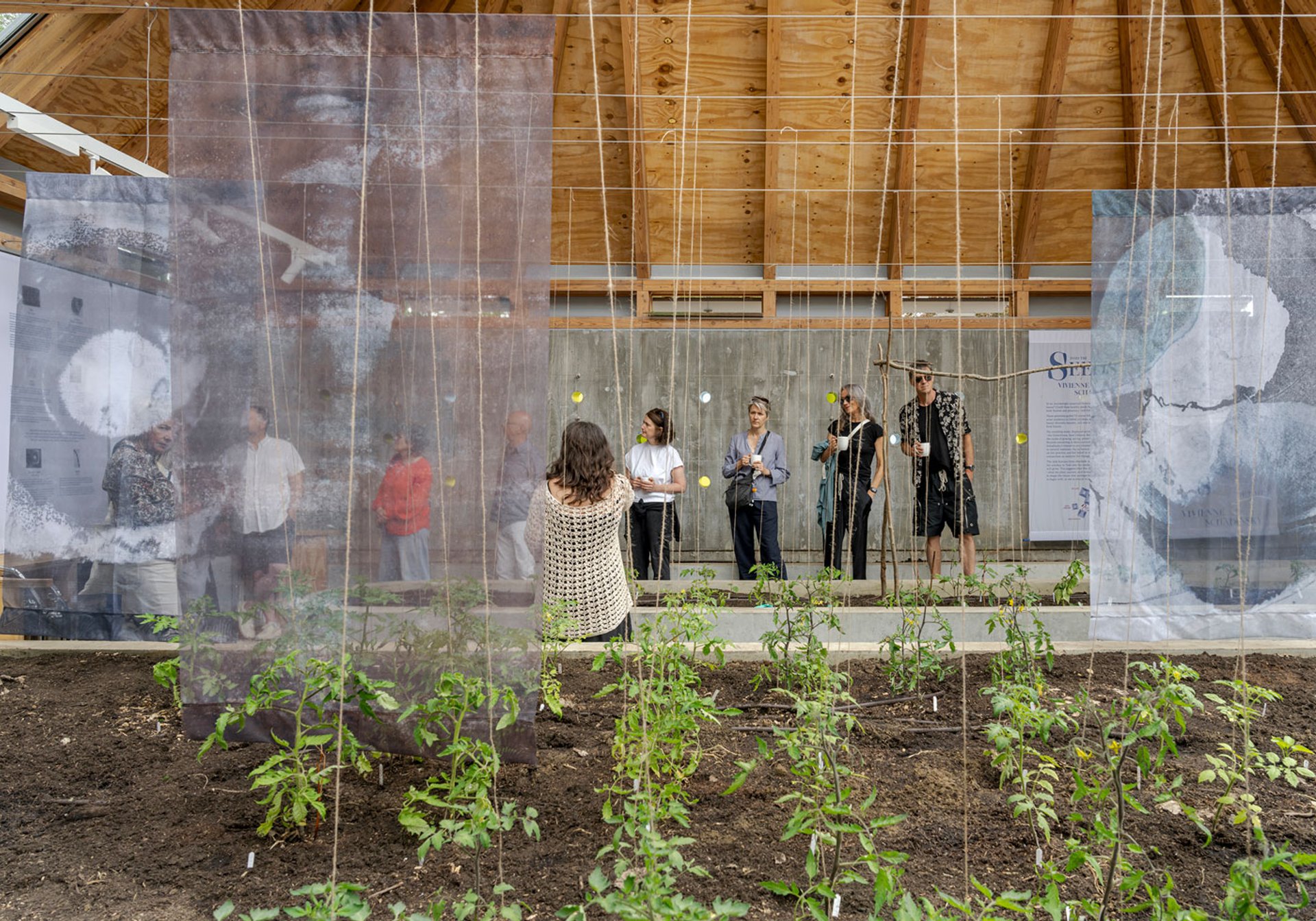
Schadinsky's work on show in the greenhouse at OmVed Gardens Photograph: Maurizio Mucciola
Partly facilitated through OmVed, Schadinsky built up a panel of scientific advisors for her residency, such as William Erskine, a lentil specialist focused on food security at the University of Western Australia, and Tiziana Ulian, a senior researcher in conservation biology at Kew Gardens and the Millennium Seed Bank at Wakehurst. “They helped me to decode the biology behind what I was observing visually,” Schadinsky says, “and eventually this knowledge became part of the material and the metaphors I worked with.” Beans, with their ability to enrich the soil for other plant species through nitrogen fixing, “became like a metaphor for mutual thriving”.
In tandem with OmVed’s seed-swapping initiative, a grassroots response to the biodiversity crisis, Schadinsky zoomed in on the Essex pea bean, an heirloom variety that has been preserved in the form of seeds. Saving these endangered plants can only work by actively growing them and regenerating the life cycle, she points out.
She sees parallels with the survival of her chosen medium, Japanese ink painting. The traditional art of Sumi-e relies on a dwindling number of artisanal makers of brushes, inks and papers. Schadinsky, the first self-taught practitioner to exhibit with the Tokyo-based International Sumi-e Association, has sought out its remote workshops during recent research trips to Japan. Sumi-e “is not very common anymore, and people in Japan are worried that this culture and the materials are vanishing,” she says. (Her prize-winning ink works were on view this summer in the association’s latest group show at the National Art Center in Tokyo.)
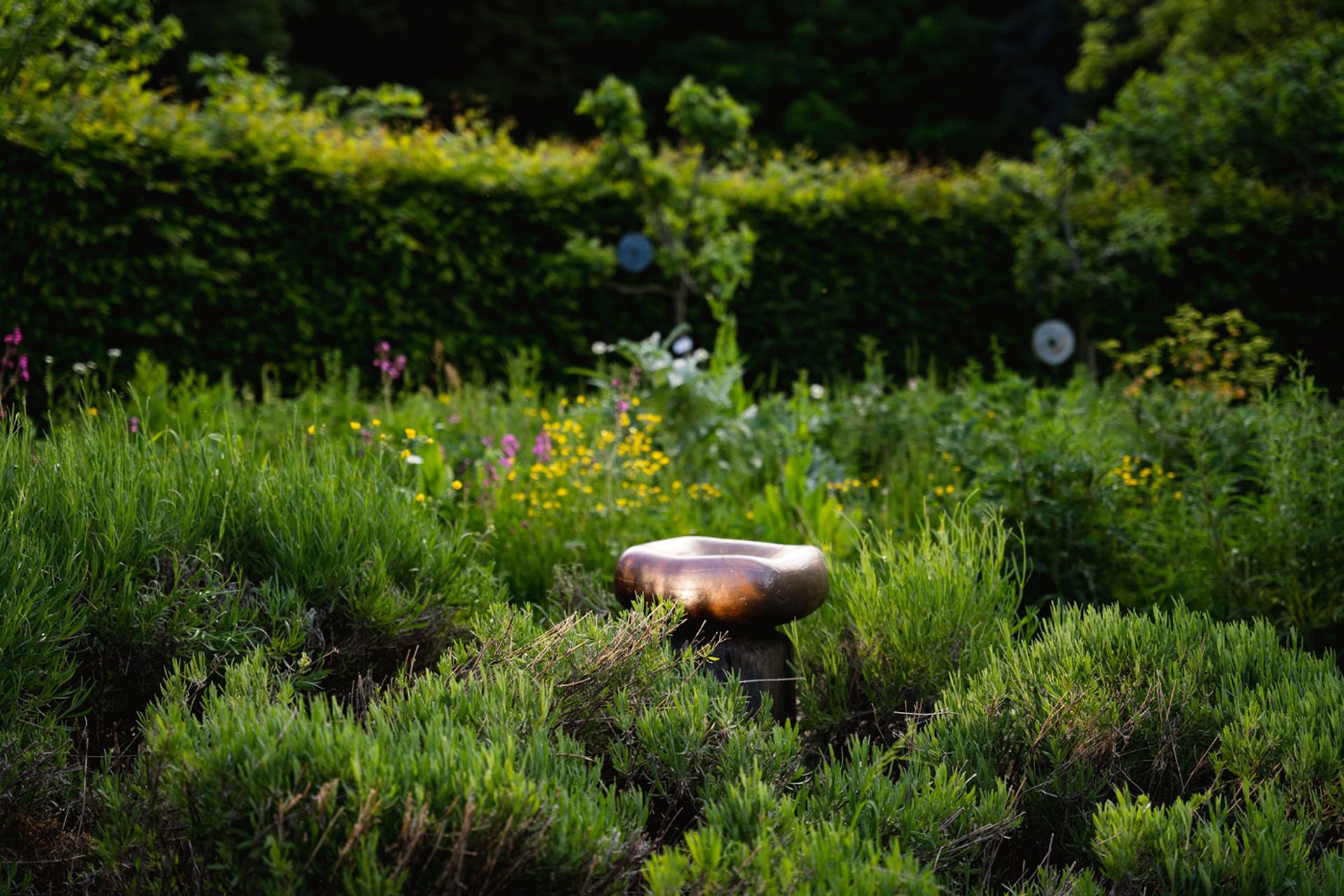
OmVed Gardens, an urban oasis in HIghgate, north London, billed as the UK’s first centre for food, ecology and creativity, has recently been relaunched with a “hilltop village” of spaces open to the public year-round Photograph: Will Hearle
Schadinsky hopes her quietly activist art will have a galvanising effect on those who make the journey to OmVed Gardens this summer. “I want the viewers to be not just viewers,” she says, “but become active participants in promoting sustainable practices.” She will also lead a series of workshops in the exhibition space, linking the practice of Sumi-e and the practice of ‘slow looking’ at nature back to the UN’s sustainability aims. “The goals focus on action and change,” she says. “By connecting these values to art, I want to empower my students and the audience.”
In an age of climate emergency, there are common questions to be addressed by environmental artists and scientists alike. “How can you encourage respect, and therefore responsibility and interdependency?” is how Schadinsky puts it. “How do you plant things?”
Vivienne Schadinsky: Into the Seeds of Time, until 3 August, OmVed Gardens, 1 Townsend Yard, London, N6 5JF. Opening times: Saturdays 10.30am - 4pm; Sundays 10.30am - 2pm.


